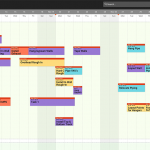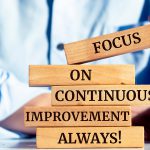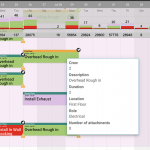This post originally appeared on PlanGrid’s Construction Productivity Blog
It is exciting to discover a new process that will take your company to new heights, but also daunting to get buy-in and widespread implementation. Here are a few ways to get the idea of the Last Planner® accepted within your organization and spreading to every project team.
How to Spread the Last Planner® System in Your Organization
Getting LPS to spread like wildfire takes five steps:
- Convince decision makers about the benefits
- Pick a project or a team to use Last Planner®
- Find a tool that will make Last Planner® easy to learn and quick to apply
- Commit to consistent implementation
- Measure and report results to validate the benefits and garner interest from others
1. Convince decision makers of the benefits.
Before you address the possibility of adoption, it’s important to answer the question, “why do we want to do this?” Start by clearly announcing problems—productivity, labor shortage, confrontational nature of the industry or lack of industry advancement—and then propose a solution and its benefits to overcome them. If you’re ready to get started, here are some tips to help your organization adopt a new idea:
Become an expert on Last Planner® and the Lean theories behind it: The better you know the practice of LPS and why it was established, the more you and others will become invested in its potential. Understand how LPS works for individual projects as well as the whole company and use this guide to get the process started. Also, educating yourself as an expert will give you confidence and lead to others having confidence in you (and could land you in the driver’s seat of the LPS application).
Discuss the idea and tools to implement the change early and enlist others in the process: Remember, Rome wasn’t built in a day. Keep that expression in mind when you’re pushing for acceptance of a new idea and tool to support it. Start using your expert-level knowledge on Last Planner® and Lean by being vocal in your professional circles. Talk the idea up to other influencers and encourage forward thinking. When the organization starts to hear about a more productive way to operate from several people, accepting it—even for a trial—will be inevitable.
Articulate how LPS will positively affect project outcomes, teams and individuals: A huge part of becoming an expert is learning the benefits of properly applying the Last Planner®. Allowing teams to be as efficient as possible and advancing projects faster than others in the industry is a monumental promise that LPS has seen work time and time again. In addition, sharing the worst-case scenarios if the company chooses not to adopt will also spark conversation.
Understand your audience and their communication style to get, then confirm support: An effective concept to remember—know your audience! Are they better in casual conversations or formal meetings? Does data or emotion drive them? Do they need the support of others to make a decision, or is it their decision alone? Using these relatively simple tactics can make all the difference. Once you’ve distributed the information, get key decision makers to affirm that they’re ready to put LPS in place.
Follow up with any comments, questions or challenges: It’s so important to offer time for additional remarks so everyone’s voice is heard. Use your LPS expertise to wrap up the conversation by addressing any fears or objections and in the future, be sure to use those points as key measurements to show that LPS is working.
2. Pick a project or a team to use Last Planner®.
If you sense that applying LPS across all projects is a monumental challenge for your organization to undergo, select a project or two to test it out with. Look at tapping projects that have project managers and superintendents that are looking to improve their process immediately.
3. Find a tool that will make Last Planner® easy to learn and quick to apply.
There are manual ways you can apply LPS, but they yield inconsistent execution and results and mass confusion—negating the benefits you carefully explained and committed to. Manual or analog execution is also unreliable and very time-consuming, not to mention easily abandoned. To get the most out of your adoption of LPS, seek out a technology option that allows project teams to be connected to measure, validate and continuously improve their building process in real time. Be sure to check out ease of use, as you want all project team members—from trade partners to owners—to be able to access and operate the tool.
4. Commit to consistent implementation.
Once you have a project team and tool selected, it’s time to start using LPS. Recognize that there must be commitment from the entire team to apply and embrace the system and technology. Solutions like Touchplan have excellent training programs to ensure everyone is introduced and ready to use it on their own, while also providing ongoing coaching for any newcomers.
5. Measure and report results to validate the benefits and garner interest from others.
The purpose of rolling out LPS slowly is to prove the benefits to get the rest of the organization excited and on board. It’s important to learn, apply, refine and execute for project teams, but sharing the data is equally important. Be sure the measurements are visual and simple to understand and access. When selecting your tool to apply LPS, take into account its reporting capabilities, too. Ensuring effortless visibility into key metrics will help put company-wide LPS application on the fast track. Showcasing consistent reports of project teams becoming more efficient (and therefore winning more projects), will make widespread interest inevitable. With the entire organization committed, rest assured more projects will be won that lead to company growth and increased profit growth rate.
It’s understandable that learning and then campaigning for a new idea in your organization can be challenging. However, it’s important to realize that there are mounting obstacles that no company in construction can escape, like the lack of labor, rising costs and the increasing complexity of projects. Those that refuse to acknowledge these changes and learn about and implement safeguards, like the Last Planner® System, will watch others in the industry advance and innovate while they are left behind.










